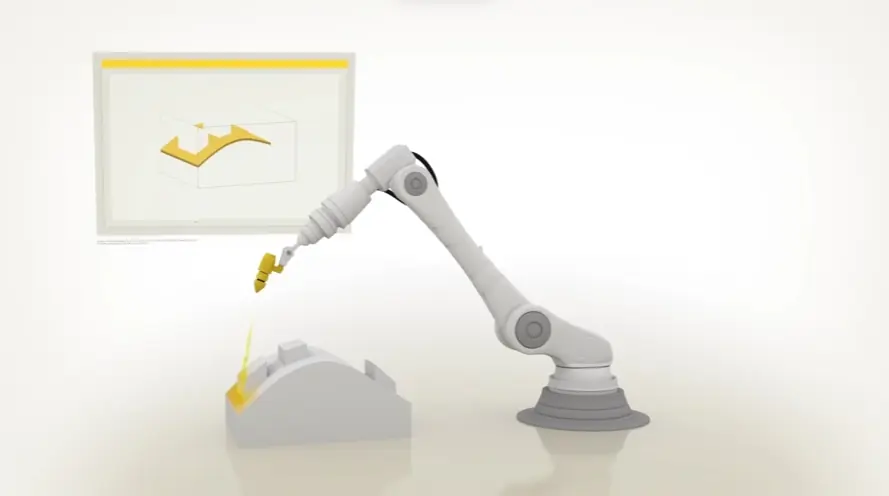Revealing product internals with animated views
Revealing product internals with animated views allows creators to demonstrate how intricate components work together, illustrating processes and flows often unseen. This capability moves beyond simple visual access, focusing instead on conveying functionality within dynamic systems. Savvy producers use these animations to show products operating in real-world scenarios, integrating seamlessly into existing workflows and tackling user-specific challenges. This approach significantly boosts the product's perceived value and relevance.
Gauging the true success of these detailed visual explanations involves metrics beyond basic view counts. Teams measure return on investment by comparing production costs against tangible gains. This includes tracking increases in qualified leads, decreases in sales cycle duration, or reductions in support requests because users better understood features shown in the video. Understanding precisely how viewers interact with the animation is crucial for optimization.
Analytical tools provide deep insights into viewer behavior. Heatmaps and attention tracking reveal which sections hold interest and where viewers might drop off, highlighting areas needing clarity. Incorporating social proof further strengthens credibility. Briefly displaying logos of well-known companies using the product or sharing user satisfaction statistics quickly builds trust with potential customers exploring the product's capabilities. A 3d animated assembly video, for instance, can reveal intricate build processes, adding another layer of credibility.
- Optimizing video elements through continuous A/B testing enhances performance.
- Testing different thumbnail images and the opening seconds captures attention more effectively.
- Experimenting with calls to action wording and placement drives higher conversion rates aligned with video goals.
- Tailoring the animation strategy for different platforms considers viewer intent, adapting for social feeds versus detailed product pages.
Concluding a 3D animated product video effectively requires clear, action-oriented calls to action. Specific prompts like "Request a Demo" resonate more than generic ones, guiding viewers toward the appropriate next step after exploring the product's inner workings.
Showing complex product mechanics through animation
Maximizing the impact of a 3d animated demo video extends beyond simply revealing product mechanics. Strategic execution involves elements that elevate viewer engagement and drive measurable outcomes. Employ clear, specific calls to action. Shift from generic prompts like "Learn More" to action-oriented text such as "Start Your Free Trial" or "Request a Demo." Align these actions with the video objective and where the viewer is their journey.
Measuring effectiveness involves tracking production costs against the quantifiable value generated. This value includes increased qualified leads, a shorter sales cycle due better-informed prospects, or decreased support ticket volume from users understood features demonstrated a 3d animated explainer video. Demonstrating products real-world scenarios enhances relatability. Show how solutions integrate existing workflows or solve industry-specific problems.
Analyzing viewer behavior offers invaluable data. Tools like heatmaps reveal which segments viewers watch, rewatch, or skip, helping identify confusing points. Incorporating social proof, such as brief flashes well-known company logos or statistics about satisfied users, builds credibility and trust quickly. A/B testing different video elements, including thumbnail, opening seconds, or CTA variations, provides insights what resonates most with target audience and drives conversions. Optimizing for different platforms considers viewer intent and viewing environment.
Specific, action-oriented CTAs like "Download Guide" convert better than vague prompts.
ROI metrics include lead conversion rates, sales cycle length reduction, and support ticket volume changes.
Analyze viewer analytics pinpoint confusing sections or areas where interest drops.
Tailor video length, style, and text overlays based platform viewer intent; social feeds differ from product pages.
Illustrating product assembly steps using 3D
Using three dimensional animation brings unparalleled clarity to illustrating complex product assembly, detailing intricate components and connections in ways traditional video struggles to match. They effortlessly place products within real-world scenarios, demonstrating how they integrate into existing workflows or solve specific daily challenges, making the benefits immediately clear to potential users.
Beyond simple assembly, creating a dedicated 3d animated installation video provides crystal clear, step by step guidance for even the most complicated setups. Similarly, a general 3d animated how-to video can effectively walk users through various product functions, ensuring smooth adoption and confident usage. Structuring these visual guides logically ensures viewers can follow along easily.
Maximizing the impact of these videos requires a strong focus on what happens after viewing. Employing action-oriented text for calls to action is key; think "Download the Full Guide" or "Schedule Setup Support" instead of generic prompts. Integrating social proof, perhaps showcasing logos of well-known organizations already using the product, builds immediate trust and encourages viewers to take the desired next step.
- Implement viewer behavior analysis using heatmaps or attention tracking to understand exactly where viewers focus or where they might get confused during complex steps, providing data for refinement.
- Continuously A/B test different video approaches, from the pacing of difficult sequences to the specific wording of the final call to action, optimizing for viewer comprehension and conversion.
- Tailor video versions for different platforms; a short, attention grabbing clip for social feeds might drive traffic to a more detailed assembly guide hosted on a product page, ensuring the message fits the viewing context.
- Assess the true value by measuring the ROI, tracking the initial production investment against tangible returns like a reduction in customer support inquiries related to assembly or faster sales cycles driven by better informed leads.
These strategic considerations transform 3D assembly videos into powerful tools that educate effectively and contribute measurably to business objectives.
Utilizing animated exploded views for clarity
Animated exploded views serve as powerful tools, meticulously dissecting complex offerings to reveal internal components and workings. This transparency builds significant viewer confidence, moving beyond the surface to showcase thoughtful engineering and build quality. Unpacking intricate assemblies visually makes the sophisticated understandable.
Within a 3d animated marketing video, harnessing this clarity directly influences viewer readiness. When prospects genuinely grasp how a product operates internally, they become better qualified leads, often navigating the sales process with greater speed. Demonstrating complex features through visual deconstruction also anticipates potential user questions, leading to a notable decrease in post-sales support inquiries.
- Employing this technique within real-world scenarios clarifies product function in practical settings.
- Showing internal integration via exploded views makes the product's place in existing workflows immediately apparent.
- Analyzing viewer behavior on these detailed segments using heatmaps pinpoints areas of high engagement or potential confusion.
- Strategically placed social proof near a clarified complex feature leverages trust to underscore reliability.
- A/B testing varying levels of detail in exploded views optimizes comprehension for diverse audiences and platforms.
Especially powerful for a 3d animated mechanism video, this approach ensures every crucial detail contributes to a holistic understanding. By making the invisible visible, businesses empower viewers, driving both comprehension and measurable outcomes by highlighting value where it matters most.
Explaining abstract product concepts with 3D
Explaining abstract product concepts with 3D requires making the invisible understandable. When products or services involve complex processes, internal mechanisms, or intangible benefits, traditional methods often fall short. This is where the power of visualization becomes invaluable. They need audiences to see how something works, even if it lacks a physical form or operates on principles difficult to grasp through words alone. Crafting an effective 3d animated product video becomes essential to bridge this understanding gap, transforming abstract ideas into relatable visual experiences that resonate with potential customers.
Moving beyond simply showing the product exterior, they demonstrate its core value by illustrating its function within practical, real-world scenarios. They show how the abstract concept integrates into existing workflows or directly solves specific industry challenges users face daily. This contextualization makes the intangible tangible, increasing perceived value and relevance. Building confidence in an abstract offering also benefits greatly from incorporating social proof elements, subtly showcasing endorsements or user statistics to quickly establish credibility and trust with viewers.
To ensure these visual explanations drive tangible results, strategic elements and measurement are key. They incorporate clear, action-oriented calls to action, moving past vague prompts to guide interested viewers toward specific next steps relevant to their stage in the buying journey. They understand that measuring the success of a 3d animated technical video involves tracking production investment against generated value, looking at metrics like increased qualified leads, a shorter sales cycle, or even fewer support inquiries as viewers gain better product understanding.
- Analyzing viewer behavior using video heatmaps provides granular data on engagement, revealing which moments truly click or where confusion might still exist.
- Identifying points where viewers rewatch or skip sections helps pinpoint areas needing clarification or segments holding strong interest.
- Utilizing A/B testing allows for refinement of video elements, from initial visuals to CTA wording, optimizing for maximum audience impact and conversion rates.
- Adapting video format and content for diverse platforms ensures the abstract explanation is delivered effectively whether viewers are on a social feed or a dedicated product page.
Ultimately, employing these focused strategies when explaining abstract concepts with 3D animation empowers businesses to not only clarify complexity but also to measure and enhance the impact of their visual communication.
Demonstrate diverse product use cases using 3D
Businesses leverage 3D animation to compellingly illustrate how products integrate into diverse situations and solve specific needs. Moving beyond simple showcases, creators focus on demonstrating real-world application, making the product's value immediately clear to potential users across various industries and daily tasks. This approach ensures audiences envision the product as a seamless part of their own environment and workflows.
Effectively showing diverse product use cases involves strategic elements designed to guide viewer action and measure impact. They craft specific calls to action, moving beyond generic prompts to action-oriented text aligning with viewer journey stages. To understand effectiveness, they measure return on investment by comparing production costs against value generated, such as increased qualified leads, a shorter sales cycle, or fewer support requests from users better understanding features. Analyzing viewer interaction patterns using heatmaps reveals which segments resonate most, informing optimizations.
- Integrate social proof, perhaps featuring recognizable company logos or user statistics, quickly building credibility and trust with audiences.
- Showcase the product operating within relevant contexts; visualizing integration into existing workflows increases its perceived value significantly. A compelling 3d animated walkthrough video achieves this by placing the solution directly in context.
- Conduct A/B testing different elements like thumbnails, initial visuals, or CTA wording to discover what resonates most and drives higher conversions.
- Tailor videos for different platforms, considering viewer intent; a 3d animated training video for a product page can offer more detail than a quick social media clip.
This detailed demonstration of varied applications, supported by clear guidance and performance analysis, optimizes viewer understanding and encourages desired outcomes.
Achieving realistic visual quality in 3D product rendering
Maximizing the impact of three dimensional product videos goes beyond just creating compelling visuals; it involves strategically optimizing their performance to achieve tangible business outcomes. Once a video is produced, its effectiveness depends heavily on how well it guides the viewer and how its success is measured against predefined goals. This requires a focused approach on viewer engagement and conversion pathways.
Showing product integration into existing workflows or solving industry problems increases perceived value. Demonstrating intricate processes, perhaps like steps in a 3D assembly video, helps users grasp complex functions easily. Whether explaining software interfaces or illustrating scientific principles in a 3D educational video, showing real-world application resonates deeply with potential customers, making the product relatable and its benefits clear within their own context.
To truly understand a video's contribution, focusing on actionable steps for the viewer and measuring performance rigorously is essential. This involves moving beyond simple view counts to tracking deeper engagement metrics and conversion data. Continuous analysis and refinement based on viewer interaction and business results drive higher returns on the investment made in video production.
- Employ specific calls to action, moving past generic "Learn More" to prompts like "Start Your Free Trial" or "Request a Demo", aligning with the viewer's journey.
- Calculate return on investment by comparing production costs against value generated, such as increased qualified leads or a shortened sales cycle length.
- Analyze viewer behavior analysis using tools like heatmaps to identify exactly which parts of the video captivate attention or cause drop-offs.
- Perform A/B testing on different elements, from thumbnail images to the first few seconds of content or CTA wording, to discover what resonates most effectively with the target audience.
Ultimately, optimizing three dimensional product videos through clear calls to action, performance measurement, and viewer insights ensures they not only look good but also function as powerful tools for business growth.
Guiding viewers through products with 3D walkthroughs
Moving beyond the technical artistry of rendering, maximizing the impact of 3D product tours hinges on strategic execution and performance analysis. Guiding viewers effectively means concluding with clear, action-oriented calls. Instead of generic prompts, employ specific invitations like "Request a Demo" or "Start Your Free Trial," aligning perfectly with the viewer's journey and the video's purpose. Real-world scenarios make a product tour relatable, showcasing seamless integration into existing workflows. For illustrating complex operational workflows or large-scale machinery, 3D industrial animation offers unparalleled clarity, simplifying intricate processes for potential clients or stakeholders.
Measuring success requires focusing on return on investment. Track production costs against tangible value generated. Quantifiable results might include an increase in qualified leads, a shorter sales cycle due to better-informed prospects, or fewer support inquiries as users grasp features clearly from the video. Analyzing viewer behavior analysis provides granular data on video performance. Using heatmaps reveals exactly which parts hold attention or cause viewers to disengage. Incorporating social proof, such as glimpses of recognized client logos or user satisfaction statistics, rapidly builds credibility and trust with the audience.
Continual refinement through A/B testing proves invaluable. Experimenting with video elements like the thumbnail, the critical first few seconds, or variations in CTA placement and wording reveals what truly resonates. Adapting content for specific platforms ensures optimal engagement; social feeds demand instant hooks often understandable without sound, while product pages support more detailed explanations. Understanding how a product fits together becomes effortless with detailed visuals; sometimes, this means showcasing components through a 3D exploded view video.
Strategic implementation transforms a visual asset into a powerful business driver.
- Track increased qualified leads as a key metric.
- Monitor sales cycle length post-video launch.
- Analyze support ticket volume for feature clarity impact.
- Use heatmaps to pinpoint viewer drop-off points.
Highlighting specific product design elements via animation
Highlighting specific product design elements via animation demands strategic thinking beyond basic visualization. Teams focus on demonstrating how products function within real-world contexts. This approach makes offerings relatable, showing seamless integration into existing workflows or effectively solving specific problems users face daily. Showcasing intricate internal mechanisms, perhaps in a detailed 3d industrial product video, further highlights product design elements and functionality.
Guiding viewers toward clear, action-oriented calls to action proves vital for driving desired outcomes. Moving past generic prompts, specific next steps like "Start Your Free Trial" or "Request a Demo" align directly with video objectives and viewer journey stage, encouraging tangible interaction.
Measuring success extends beyond simple view counts to evaluating return on investment. This involves comparing production costs against value generated, such as increasing qualified leads, shortening sales cycles, or reducing support tickets due to enhanced product understanding from the video.
- Analyzing viewer behavior offers invaluable granular data; tools yielding heatmaps or attention tracking reveal precisely which video segments engage viewers most or where interest drops, enabling targeted refinement for better performance.
- Incorporating social proof, like displaying well-known company logos utilizing the product or mentioning satisfied user statistics, quickly builds trust and credibility with prospective customers.
- Experimentation through A/B testing different video elements yields significant insights; testing aspects like thumbnails, initial content, CTA placement, or wording helps identify what resonates most strongly with the target audience, driving higher conversions.
- Optimizing for diverse platforms requires considering viewer intent and environment; videos for social feeds need to grab attention instantly, often understandable without sound using text overlays, while product page videos can offer more comprehensive details assuming higher engagement.
Ultimately, integrating these techniques strategically maximizes the impact and return of a 3D marketing video.




































